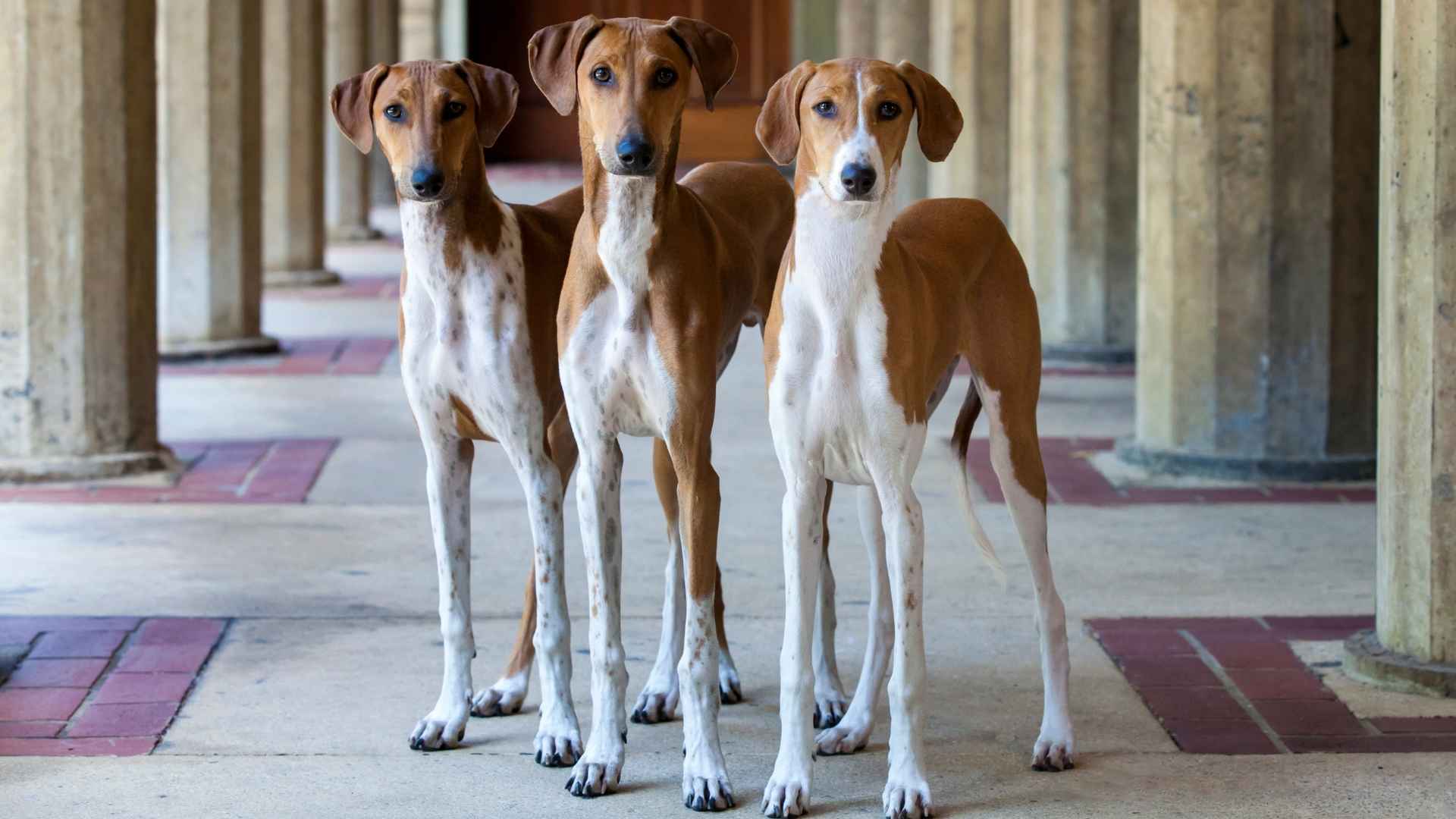The first time I saw a dog with fur like cords, I stared. Not because it looked messy, but because it looked like art. The owner smiled and said, “Catalburun. Most people don’t know them.” That stuck with me.
I started looking beyond common breeds and fell into a world of dogs I never knew existed. Dogs with ancient stories, island roots, or coats that never shed. Some had fox-like faces. Others looked like living sculptures.
I realized then how many hidden gems the dog world holds. These breeds aren’t on billboards or in commercials. But they’re unforgettable once you meet them. You don’t need to be a collector of rare things to love rare dogs. Sometimes, it just takes one unusual trait to fall in love.
This article takes a closer look at unique dog breeds with rare looks, fascinating traits, and stories you’ll want to remember.
Unique Dog Breeds
1. Catalburun
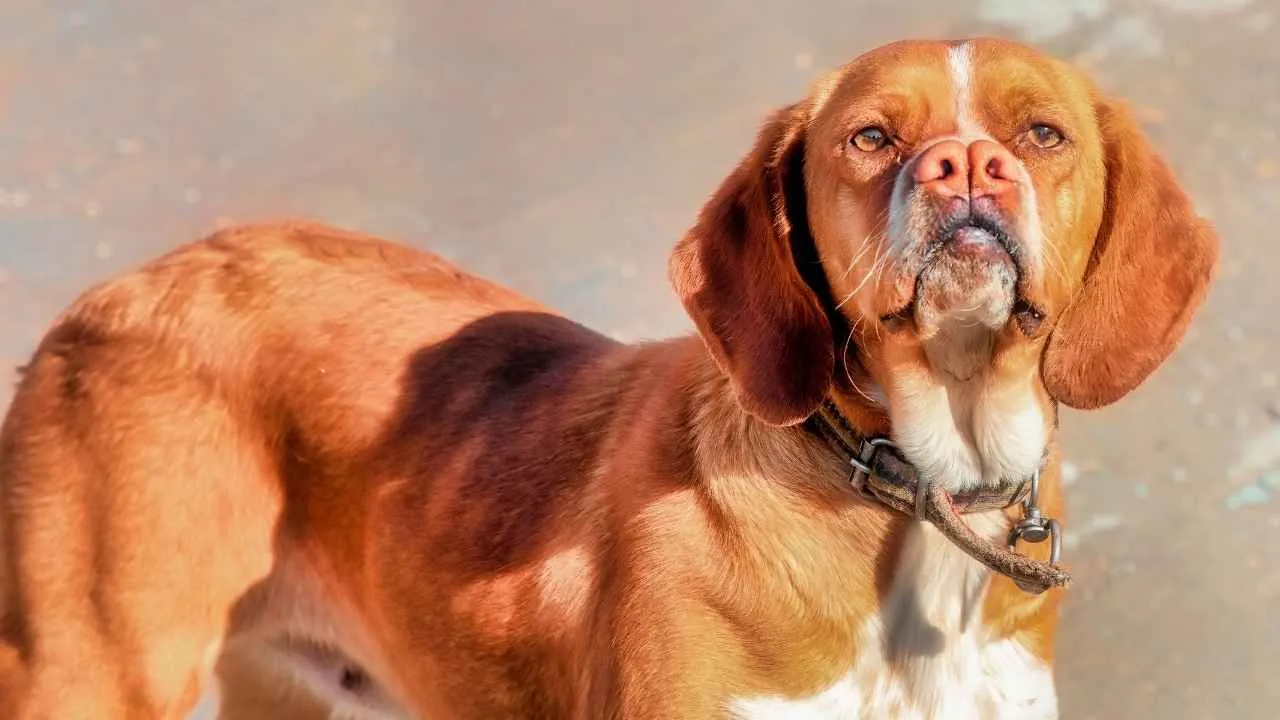
Catalburun is one of the only known breeds in the world with a split or double nose structure. This rare feature isn’t just for looks — it’s linked to enhanced scent-tracking ability. The nose is deeply divided at the center, forming two clearly separate nostrils.
Natural Tracker with Sharp Focus
They’re most active when working outdoors and respond quickly to ground scents. Hunters value their focus and stamina, especially in unfamiliar terrain. This breed is known for quiet but determined movement while tracking game.
Deep Roots in Southern Turkey
Catalburun is found almost exclusively in the Tarsus region of Turkey, limiting its global presence. It’s frequently listed among the world’s most rare dog breeds due to this regional isolation. Few have been exported, which makes verified breeding lines harder to trace.
Purpose-Bred for Precision
They were originally bred as hunting dogs, valued for their accurate scent detection in rugged conditions. Their behavior stays calm around handlers but shifts into alertness in the field. That unique split nose continues to define their working reputation.
2. Xoloitzcuintli
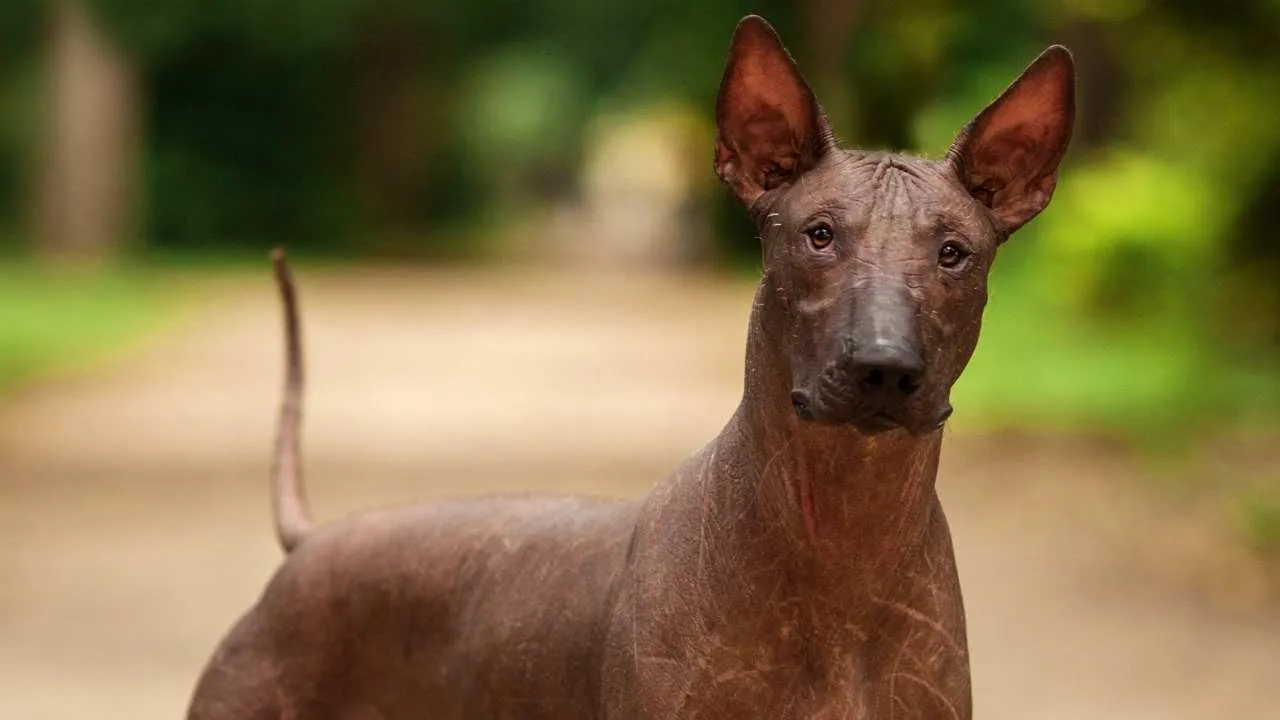
The Xoloitzcuintli dates back over 3,000 years and is deeply tied to Aztec culture and ritual practices. Archaeological findings show their remains in burial sites across Mexico. This rare breed is one of the oldest documented companion dogs in the Americas.
Bare Skin with Protective Purpose
Their hairless variety is the most recognized, featuring smooth skin in shades of black, slate, or reddish tones. Without fur, their body releases heat more directly, often acting as a natural warming source. Their skin requires gentle cleaning and sun protection.
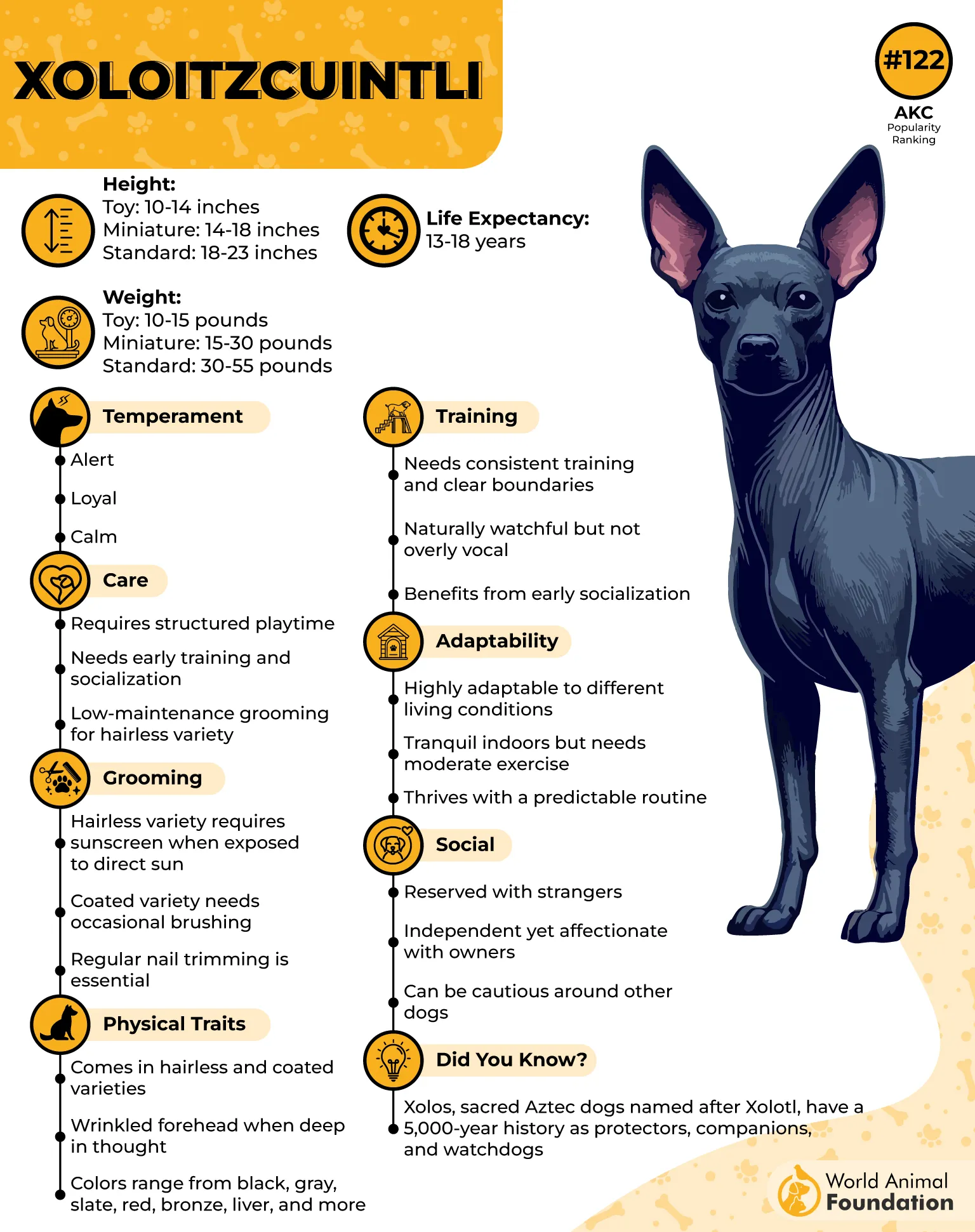
Calm Nature with Strong Awareness
They’re alert but not overly reactive and adapt well to indoor life with minimal barking. Compared to most dogs, they tend to be more reserved with strangers but bond quickly at home. Their stillness and confidence are often praised by experienced owners.
Loyalty Runs in Their Temperament
Xolos are naturally close to their household and have a reputation for sticking to one person closely. This trait has earned them the title of a loyal dog in traditional Mexican households. Their behavior blends protectiveness with quiet companionship.
3. Canaan Dog
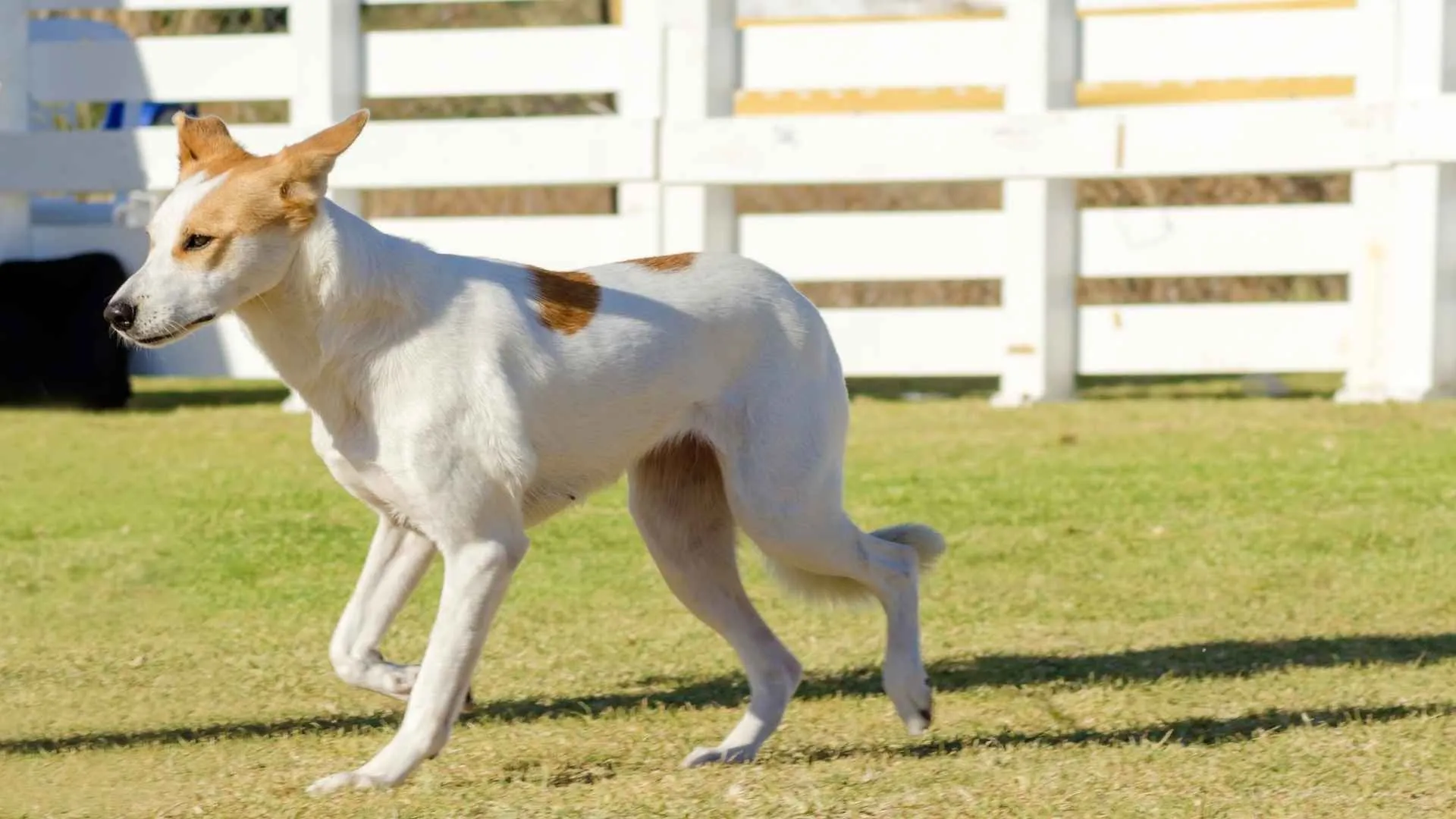
The Canaan Dog is highly alert and responsive, originally shaped by generations of desert survival. Its keen senses and territorial awareness make it an instinctive watchdog. Even today, many remain cautious with strangers while being deeply bonded to their families.
Hardy Structure Suited for Harsh Lands
This breed has a square, balanced body with a clearly visible, sturdy build that handles long movement. Its double coat protects against both heat and cold, especially in arid climates. The legs are straight and strong, giving them efficiency in stride and speed.
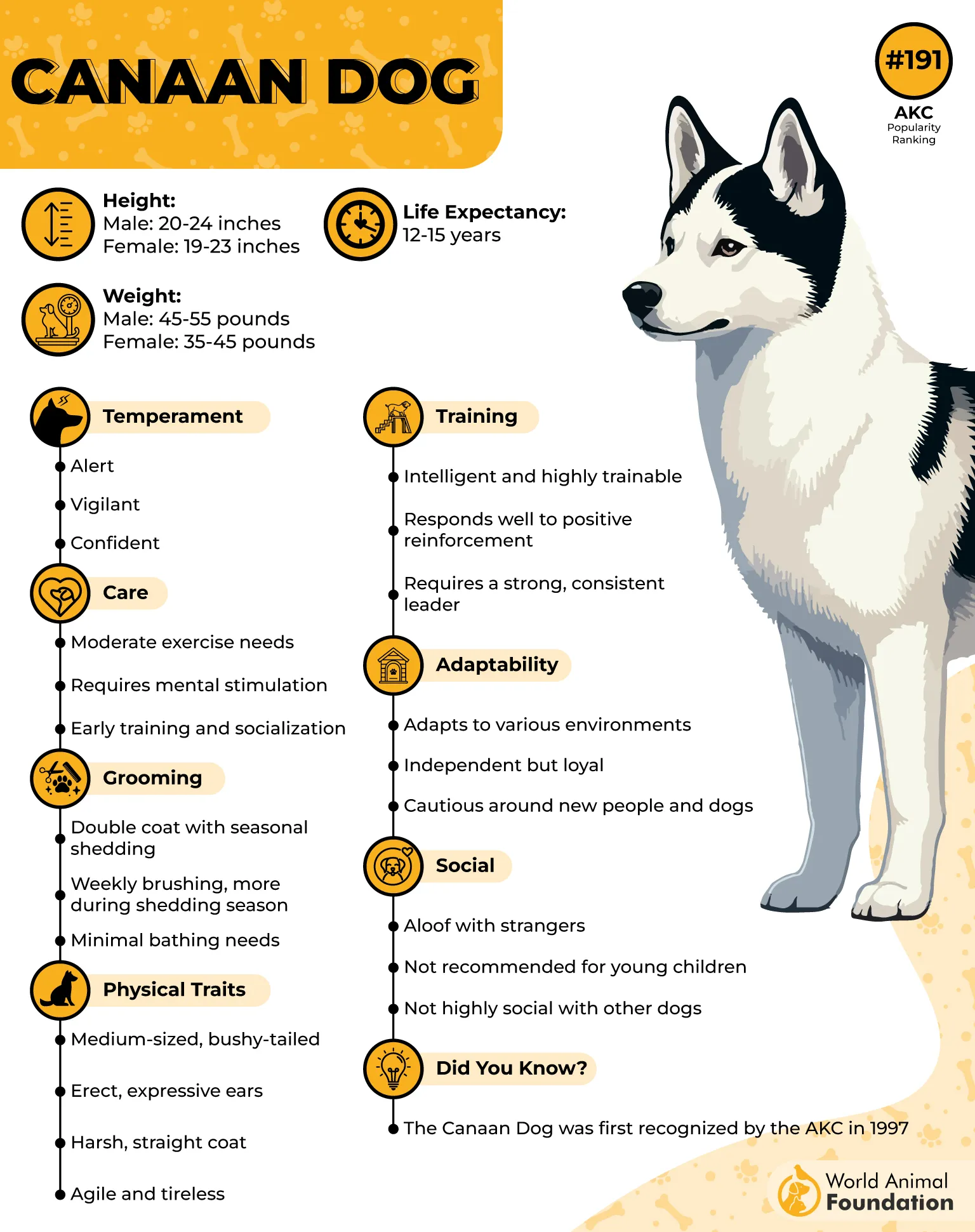
Independent But Trainable
Canaans are intelligent and quick to learn, especially when guided with positive reinforcement techniques, as stated in the Showsight Magazine. Harsh corrections may cause them to withdraw, so handlers often rely on consistency and trust-building. Early training helps shape their natural independence into responsiveness.
Strong Bonds and Loyal Nature
Once attached to their humans, they’re known to be devoted and protective without being overly clingy. Many owners describe them as great companions who respect space but stay closely tuned in. Their behavior tends to be calm indoors and watchful outside.
4. Azawakh
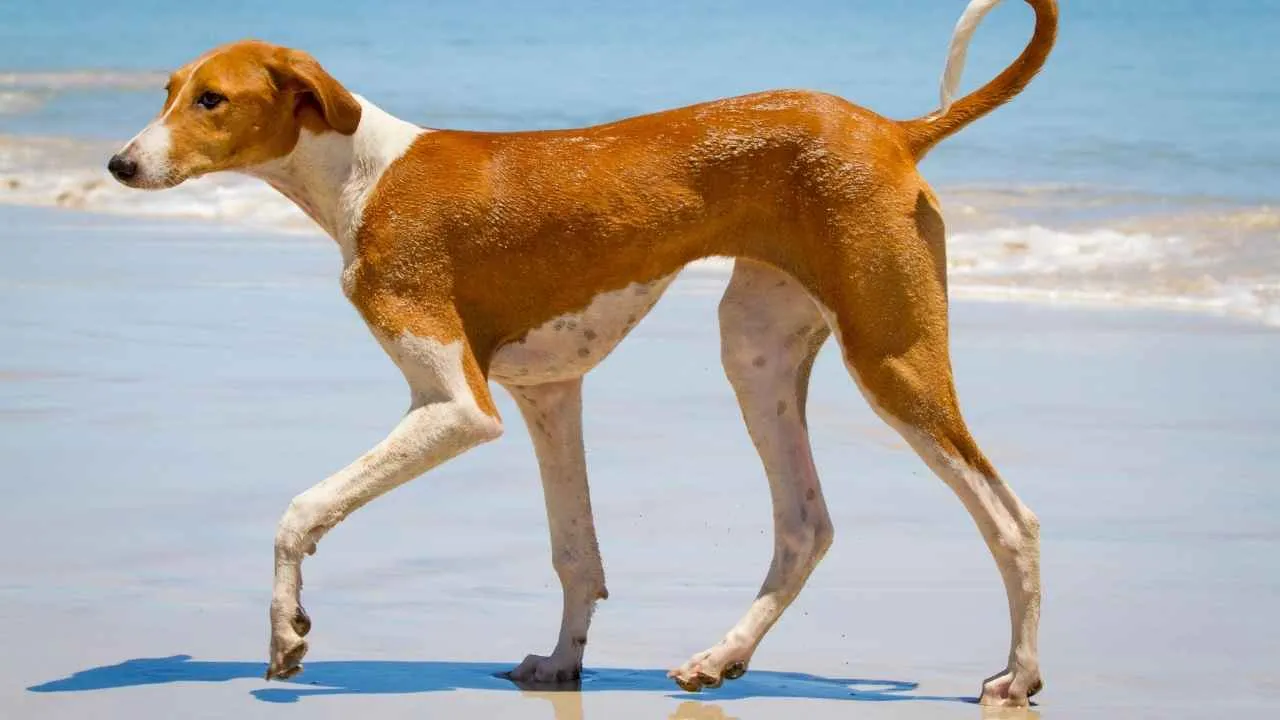
The Azawakh is a sighthound from the Sahel region, known for its tall, narrow frame and visible musculature. Their body structure is so lean that ribs and bone outlines are often visible even in good health. This build contributes to their speed and heat tolerance in desert climates.
Movement That Reflects Purpose
They have a distinct, elegant gait with long strides and a straight, upright posture. Azawakhs are built for endurance and excel in open areas that demand agility and speed. Their physical movement remains light but sharply attentive to sounds and motion.
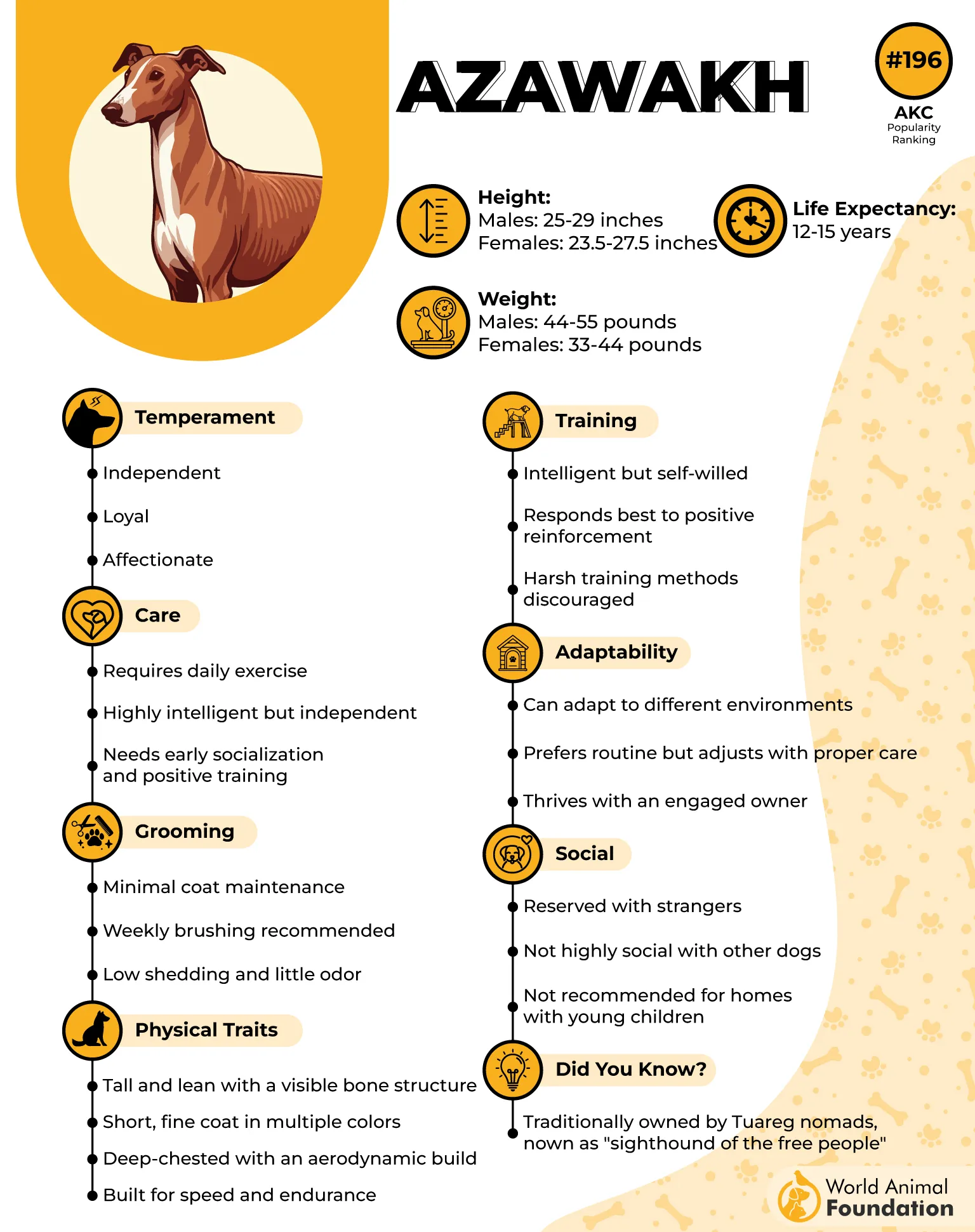
Behavior with Strong Territorial Instincts
They form tight bonds with their family but remain reserved with outsiders, showing natural wariness. In their native regions, they are used as guard dogs for livestock and homes. Their alert nature is paired with independence, often needing calm and confident handling.
Athletic Needs and Daily Routine
Azawakhs require regular exercise to stay mentally and physically balanced due to their high energy levels. They do best in large, open areas where they can stretch into full sprints. Their slim frame and elegant stride are among their most unique characteristics.
5. Telomian
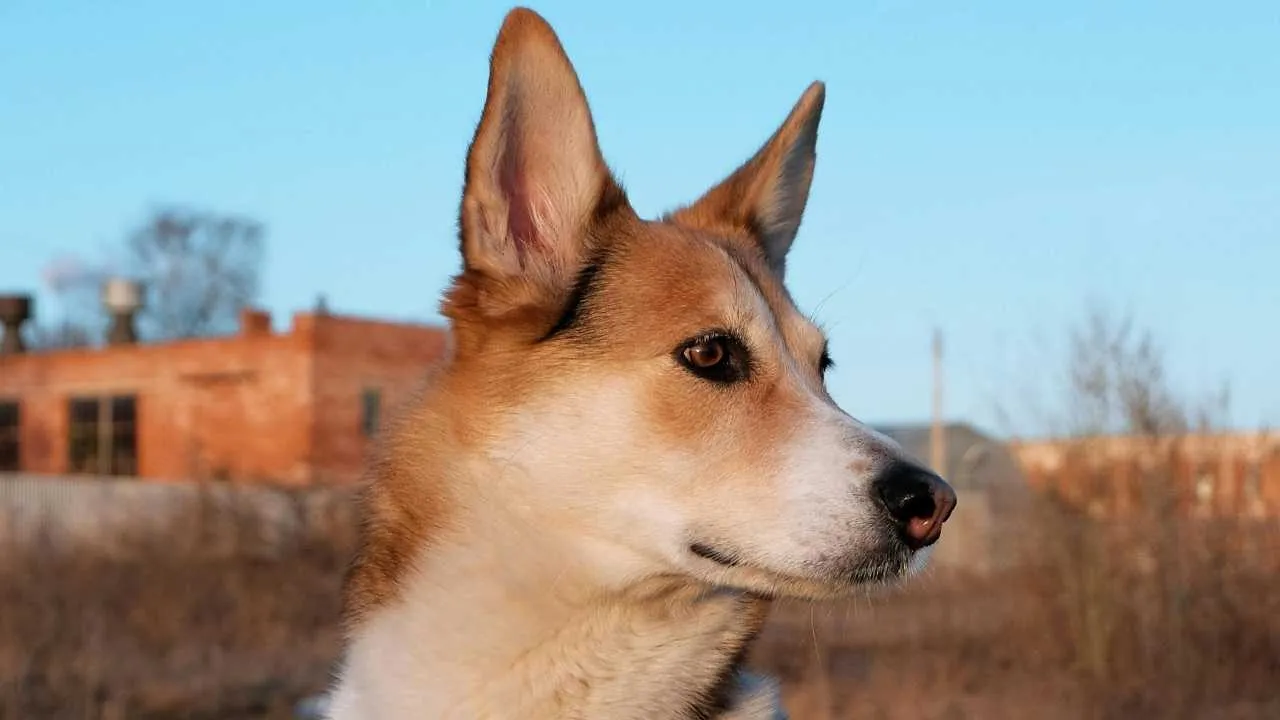
The Telomian is indigenous to Peninsular Malaysia and closely associated with the Orang Asli communities. These dogs adapted to remote jungle terrain with strong climbing skills. Their survival in stilt-raised homes influenced their agility and independence from a young age.
Adapted for Environment and Movement
They are known for a spiral tail, erect ears, and excellent balance, especially in high or narrow spaces. Their movement is precise, which helps them scale ladders or slatted structures with ease. This agility reflects centuries of selective survival in isolated areas.
Behavior Suited to Isolation
Telomians are alert, reserved with strangers, and quick to respond to sound or motion. They typically bond closely with one or two people rather than groups. Their cautious but responsive nature comes from generations spent in quiet, undisturbed environments.
Population Remains Extremely Limited
Telomians are considered one of the most distinctive breeds due to their remote origin and preserved traits. Their presence outside Malaysia is extremely rare, with a few lines documented in the U.S. They are often cited as a unique breed in regional canine studies.
6. Karelian Bear Dog
The Karelian Bear Dog is known for its bold nature and ability to face large animals without backing down. It shows high confidence, especially during encounters with wildlife. This breed reacts quickly, often making firm eye contact before giving alerting barks.
Compact and Agile Body
It has a sturdy, athletic build with a dense double coat suited for cold environments. The tail curls tightly over the back, and its stance stays steady during movement. These physical traits support fast turns and balance in forest terrain.
Strong Cultural Background
The breed is considered a national treasure in Finland and is highly respected in rural areas. It’s used in bear and moose control efforts where calm, fearless behavior is needed. These dogs are bred for practical roles, not ornamental ones.
Scent and Focus Driven
Karelian Bear Dogs have strong scent-tracking instincts and develop them early in life. They are vocal when on trail but work independently without constant cues. Their determination remains consistent through harsh weather and long search durations.
7. Thai Ridgeback
This breed features a clearly defined ridge along its back, formed by hair growing in the opposite direction. The ridge appears in eight known patterns, each genetically traceable. Their short, tight coat makes the texture of the ridge especially noticeable by touch.
Agile Frame Built for Movement
Thai Ridgebacks have a muscular, streamlined body that supports quick reflexes and efficient movement. Their strong hind legs help them jump surprisingly high for their size. This agility makes them effective in guarding or free-roaming roles.
Naturally Independent Temperament
They tend to form strong bonds with a single person and are cautious around unfamiliar faces. Their independent behavior often reflects their historical use in low-intervention roles. Obedience training works best when started early with consistent methods.
Regional History and Survival Traits
This breed has existed for centuries in Thailand and was used for guarding homes and livestock in rural regions. They adapted well to tropical conditions, including heat and parasite exposure. Isolated breeding helped preserve their defining features over generations.
8. Norwegian Lundehund
The Norwegian Lundehund has six toes on each foot, giving them a wider paw surface. This feature helps them balance on steep, rocky cliffs while climbing. Their neck can also bend back far enough for the head to touch the spine.
Born for Puffin Cliffs
Historically used to hunt puffins along Norway’s rugged coast, they navigated vertical terrain with ease. Their narrow head and flexible shoulders helped them slip into deep nesting crevices. This work required strong stability and unusually agile joints.
Isolated Ancestry and Population
The breed was nearly extinct after World War II, with only a few surviving dogs in remote areas. Every modern Lundehund traces back to just five post-war individuals. They remain rare, with close monitoring by national breeding programs.
Specialized Traits and Care Needs
They can close their ears to block moisture or dirt from entering, a trait specific to this breed as highlighted by the AKC. This protects them during climbs and in tight, debris-filled spaces. Their digestive system is also unusual and sensitive, requiring careful dietary choices.
9. Otterhound
Otterhounds have a rough, double coat with an oily texture that helps repel water. This weatherproof coat supports their long hours in cold streams. The outer layer is dense and coarse, while the undercoat is soft and insulating.
Webbed Feet for Aquatic Work
Their feet are large and fully webbed, built specifically for swimming through strong currents. These paws act like paddles, giving them strength in deep water. Even as adults, their swim reflex remains unusually strong.
Strong Scenting with a Deep Voice
They possess a highly developed sense of smell and can track scent trails for hours. Their baying voice is deep and loud, which was once used to signal their location during hunts. This vocal trait remains distinct in the breed today.
Body Frame Supports Endurance
Otterhounds are large-boned with loose skin, which prevents water resistance during movement. Their deep chest allows greater lung capacity for stamina in active sessions. The breed has long legs that give them better reach when covering ground.
10. Chinook
The Chinook was developed for pulling strength and steady endurance in extreme winter terrain. Their build is muscular but not bulky, combining speed and strength. They have a deep chest, dense double coat, and long stride suited for long hauls.
Calm Nature, Strong Work Ethic
They’re known for a quiet, cooperative temperament and rarely show aggression or hyperactivity. Bred to work in teams, they respond well to shared tasks and routines. Chinooks often maintain eye contact with handlers during active commands.
Deep New England Origin
The breed was developed in the early 1900s by Arthur Walden in New Hampshire for reliable sledding performance. Their bloodlines came from Northern dogs crossed with Mastiff-type breeds. Historical registries document their role in early polar expeditions.
Known for Stability and Rarity
The Chinook is listed by the AKC as one of the least populous breeds in the United States, as stated in AKC. Their small gene pool has made preservation a focus for dedicated breeders. Puppies are often reserved well in advance due to limited litters.
Conclusion
The more you explore rare breeds, the more you realize how much the dog world still holds. A Chinook isn’t just a sled dog. A Telomian isn’t just a climber. These breeds offer more than unusual looks—they reflect time, place, and purpose.
Whether you’re drawn to a smooth coat, a big dog with focus, or a small dog full of resilience, there’s something here for everyone. These aren’t just companions—they’re working dogs, bred for precision, instincts, and endurance.
Some come from ancient roles as versatile hunting dogs, while others are modern rarities. Many still benefit from early socialization and have made their way into the American Kennel Club’s spotlight.


